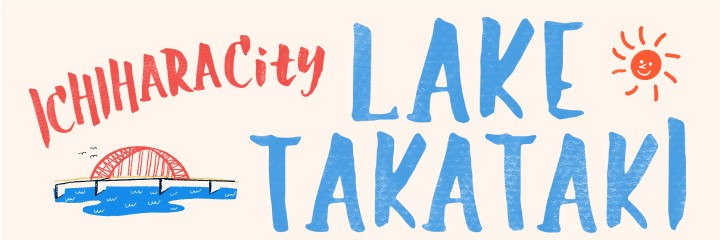The Impact of Mexico – Mexican Experiences Shake Japan Radically
2021.07.10.Sat.
- 2021.09.26.Sun.
where the art of revolution is engraved, and life and death, ancient and modern,
real and surreal are mixed
This year, 500 years after the Spanish conquest of Mexico and 200 years after it achieved independence, the Ichihara Lakeside Museum is pleased to present The Impact of Mexico—Mexican Experiences Shake Japan Radically.
Chiba Prefecture, where our museum is located, is known as the place where exchanges between Japan and Mexico began. In 1609, the sailing ship San Francisco, which had departed from the Philippines for Mexico, was wrecked off Onjuku, on the Pacific coast of Chiba, and more than 300 people were rescued by local residents. The lord of Otaki Castle, Tadatomo Honda, carefully protected them, and Ieyasu Tokugawa then helped them return to Mexico safely.
Exploring the history of exchanges between Japan and Mexico, this exhibition focuses on artists who were or have been shocked by Mexico—its history, climate, people, and art—and addressed it in their own work. It is an attempt to reveal what attracts them to Mexico and to illuminate their experiences of Mexico from various perspectives.
The featured artists include Tamiji Kitagawa, who moved to Mexico immediately after the revolution, was moved by the Mural Movement for the art of the people, and lived as a rebellious painter after returning to Japan; Kojin Toneyama and On Kawara, who were shocked by the Great Mexican Art Exhibition at the Tokyo National Museum in 1955 and sought for new mode of expression after staying in Mexico; Taro Okamoto, who discovered “Mexico” in himself and painted a huge mural, Myth of Tomorrow; Yukio Fukazawa, a leading figure in postwar copperplate prints, who changed his style after visiting Mexico, where he was invited to teach printmaking; Shigeru Mizuki, who had a huge collection of Mexican masks and saw the world where the Mexican people live with ghosts; Koji Suzuki, a picture book artist who is fascinated by the festival of "Day of the Dead" and continues to draw magical pictures with intense colors; Kaori Oda, who filmed a mysterious journey around the Mayan cave fountain, which is believed to connect this world with the nether world, in the movie Cenote.
Today, the world is being torn apart by a desire for exclusivity and for solidarity, while the COVID-19 pandemic makes us question how life and death should be and the foundations of our civilization itself. In these unsettling times, the "Mexico" that these artists resonate with will give us many suggestions.
Exhibited Artists:
Tamiji Kitagawa, Taro Okamoto, Kojin Toneyama, Yukio Fukazawa, On Kawara, Shiberu Mizuki, Koji Suzuki, Kaori Oda
Highlights

Tamiji Kitagawa, Mexico's Three Children (1937)
1) Explore the Influences of the Mexican Renaissance on Japanese artists
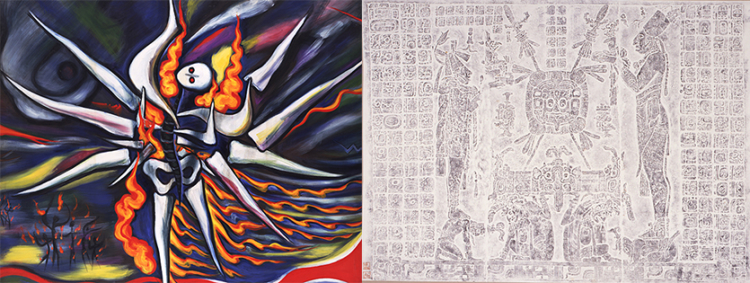
Left: Taro Okamoto Myth of Tomorrow (1968). A 1/3 scale painting of the final version of the mural, which is currently installed at Shibuya station. Also on display are photographs of Mexican people, life, and ancient ruins taken by Okamoto. Right: Kojin Toneyama, Palace of the Sun (1963). The frottage works by Toneyama, who was fascinated by the Mayan ruins, are also on show in this exhibition.

The postcards from Mexico addressed to Kasper König launched the I Got Up series. This exhibition also presents Kawara’s work from his Japanese period and a leaflet for sales of his work organized by Shuzo Takiguchi and other friends to support his travel to Mexico.
2) Consider the Unknown: On Kawara’s Mexican Period

12 youkai illustrations as well as 30 masks and folk craft objects from Mizuki’s collection are on display.
3) Shigeru Mizuki's Mexican mask collection is on display
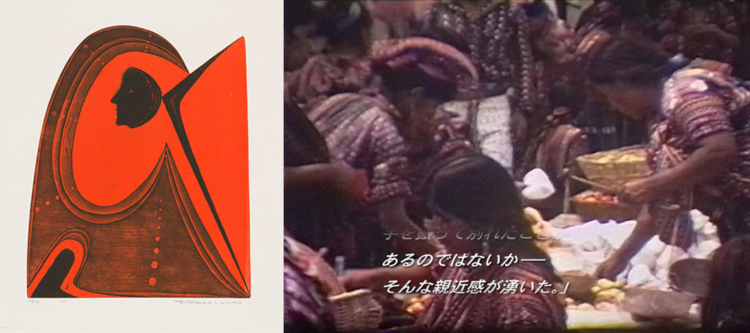
Yukio Fukazawa, Aztec Journey (1969) The video work Mexico seen by Yukio Fukazawa. Dengaryu composed the music and arranged Fukazawa’s words for the film recorded by Fukasawa.
4) Collaboration between Yukio Fukazawa and the rapper Dengaryu
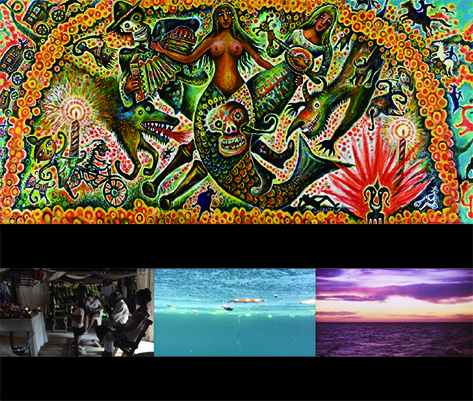
Koji Suzuki , Day of the Dead (2000), Kaori Oda, Day of the Dead (2001)
5) Installations to experience the underground world and the earthly world of Mexico
Profile
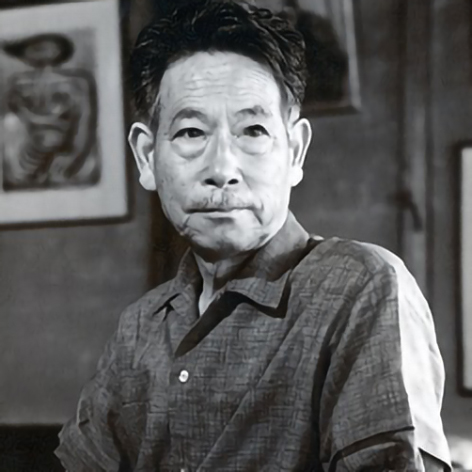
Tamiji Kitagawa[1894-1989]
.jpg)
Taro Okamoto[1911-1996]
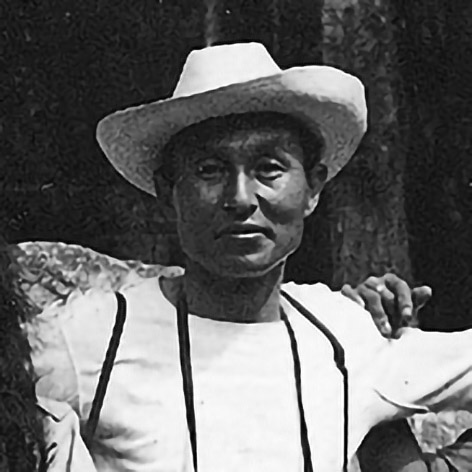
Kojin Toneyama[1921-1994]
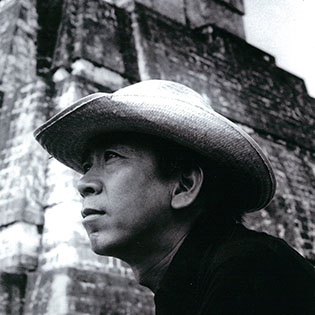
Yukio Fukazawa[1924-2017]
On Kawara[1932-2014]
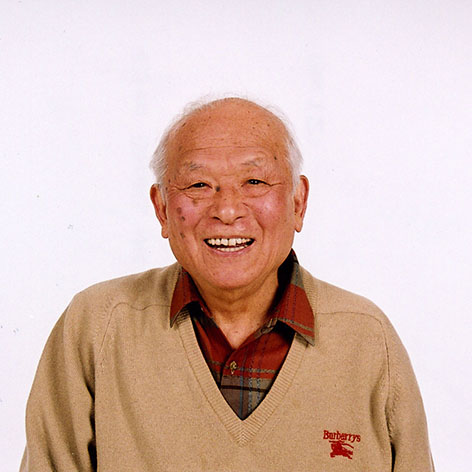
Shigeru Mizuki[1922-2015]
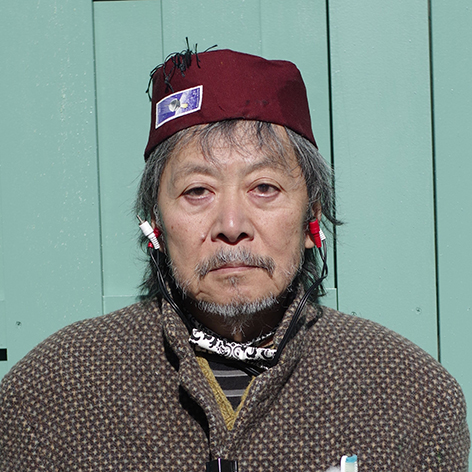
Koji Suzuki[1948-]
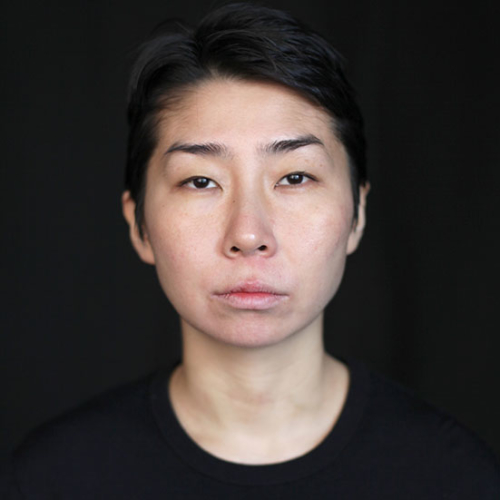
Kaori Oda[1987-]
She is a recipient of Grants for Overseas Study by Young Artists of Pola Art Foundation.
Her second feature, Toward A Common Tenderness (2017) a poetic film research, had its World Premiere at DOK Leipzig and her latest film, TS'ONOT/Cenote (2019) shot in underwater caves in Yucatan Mexico, was premiered in Bright Future section at International Film Festival Rotterdam 2020. She received the Inaugural Nagisa Oshima Prize in 2020 and the new face award of Minister of Education Award for Fine Arts in 2021.
Prev
Next
.jpg)

